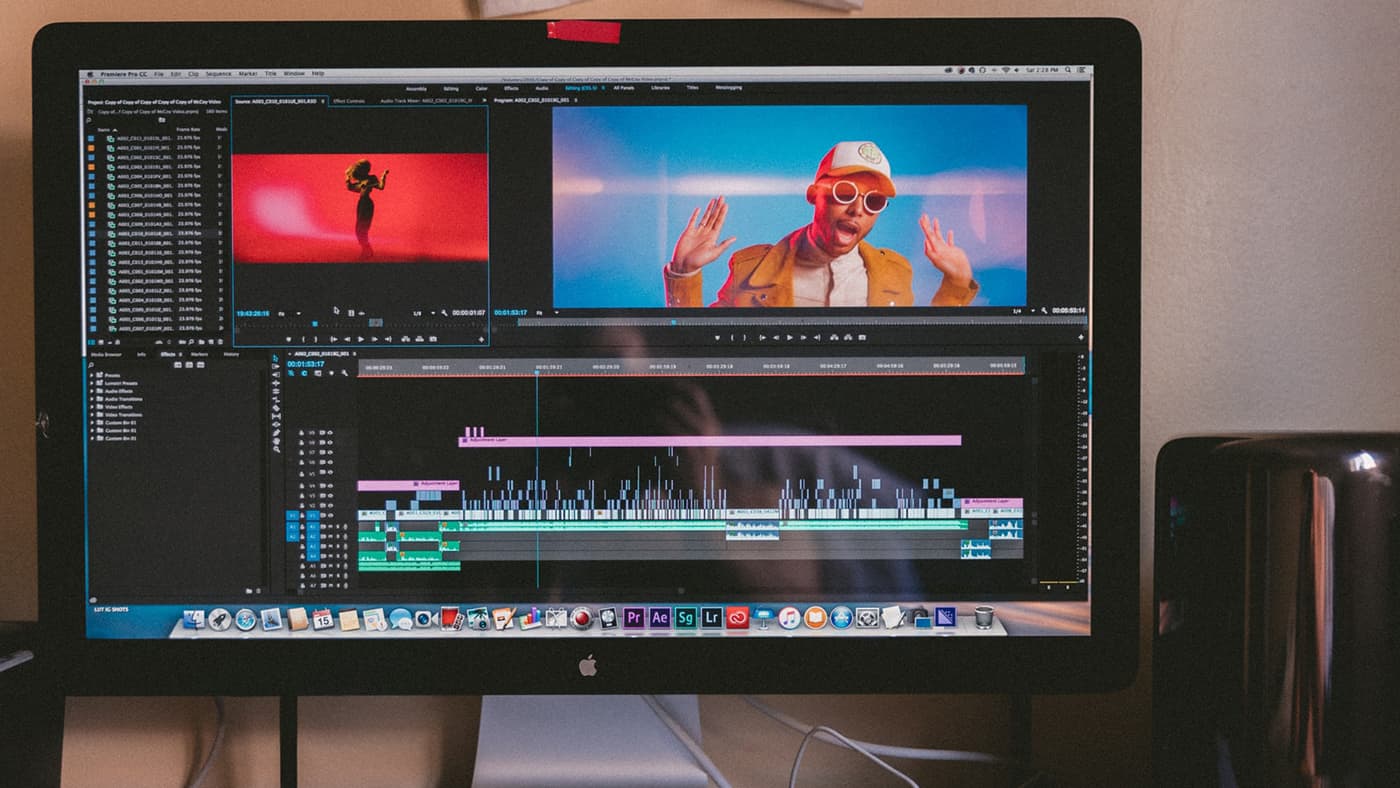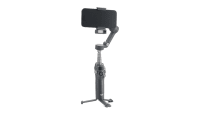The Ultimate Guide to When You Should (and Shouldn’t) “Fix it in Post” – Part 3: A New Post Perspective
Ron Dawson • Feb 19, 2021

I have no doubt that if you’re reading this, at some point in your career (or more likely, many, many points), you’ve heard the infamous term “we’ll fix it in post.” In short, it generally reflects an attitude of correcting some mishap on set with post-production time and funds. Whether it’s rotoscoping out a boom pole that was caught in the shot or correcting for horrible lighting.
- In part 1 we looked at aspects of film production that get “fixed” in post on purpose.
- In part 2 we covered everything from visual to audio issues that would require fixing. Issues you are better off ensuring you DON’T need to fix.
Today we’re going to look at ways of determining how to and who makes the call when something needs to be fixed; and finally, I want to offer a whole new perspective on the term. This is the third and final part of “the ultimate guide to when you should (and shouldn’t) fix it in post.”
Making the call
I don’t think there has been a film set in the history of cinema that has not had something go awry, or not work out exactly as planned. Those situations won’t always result in something needed to be fixed in post-production–but when that does become a viable option, a decision has to be made.
Depending on the circumstances, the person (or persons) who can make the decision whether to re-do a shot or fix it in post, can vary anywhere from the director or executive producer, to an agency representative (if you’re doing a large commercial shoot), or the client directly.
If you’re the editor, VFX artist, colorist, or some other post-production professional who will be the one charged with fixing “it,” chances are pretty good you are not the one to actually make the official call. However, you can play an important role in ensuring you’re not faced with that situation by properly educating the production team members who do hold that responsibility. The more you can inform them upfront everything you need and what the costs and time lost will be if you’re faced with fixing something in post, the better.
At the end of the day, the education of all parties involved is a post-production professional’s best chance at avoiding a “fix it in post” situation.
Seeing the light of a new perspective
Before I finish up, I want to offer one additional “solution” to the “fix it in post” mindset. That is, “flip the script.” In other words, change the way you look at the issue.
In part 2 of the series, I told you about the survey I conducted of members on the Blue Collar Post Collective Facebook group thread. As expected, I got a huge response to this topic. Post-production professionals from all aspects of the industry responded to me both publicly on that thread, and privately in DMs. One person comically quipped:
“your problem = my mortgage payment.”
Naturally, the sentiment here is that if you’re an editor that is paid by the hour, any extra time you have to spend “fixing in post” is just more money added to your pocket. I remember that being a similar mindset I used to have when doing commercial video work was more of a full-time gig for me. If a client wanted to make changes, per my contract (and I always had one), I was fine with those client-approved revisions because it meant “mo’ money, mo’ money, mo’ money!”
But there’s another perspective you can take when considering this infamous phrase. The fact that having to fix things in post often leads to opportunities to improve your skills as an editor. Ryan Megan is one of the editors on BCPC who shared this sentiment.
I’m an editor (mostly TV non-scripted) and have been in the industry for almost 20 years. I have strong opposing feelings about that phrase. Of course, too often it is muttered in lazy earnestness, by someone in production to excuse away something they should be fixing there. And I curse thee every time. However, on the flip side, this is when I have shined the brightest in my job. The largest amount of professional growth or applied expertise came from being handed things I thought weren’t fixable in post, but I still figured out how to fix. At the end of the day, it’s more a badge of honor than an albatross to be given this level of trust and responsibility, even if it is sometimes given with selfish and/or lazy pretense. It’s why I get paid as much as I get paid, so I’m cool with it.
I couldn’t agree more with Ryan’s point. I can’t tell you how many times I was faced with a challenge that formed on set that led to me improving my abilities as an editor. The most prominent memory I have is very early in my career. Like most professional videographers, I started out shooting weddings. And on one of the first weddings I shot—a one-camera wedding since I did not yet have clients who could afford more than that—it was outdoors and the altar was situated such that the sun was beaming directly into the camera for most of the ceremony. I could not move the camera so I was stuck with 20 minutes of a 30-minute ceremony that was essentially just one long sun glare (thankfully, the sun moved early enough where I was still able to capture the pronouncement and kiss!)
Thank goodness I had pristine audio. Using a ton of b-roll from the day, I created what became at the time (and for a while after that), one of the most beautiful pieces I had in my filmography. It was also the wedding that forced me to learn how to effectively combine visuals and audio to tell engaging documentary stories.

If I did not have that “trial by fire” moment of being forced to pivot creatively, I would have ended up with a more traditional, straightforward wedding video. I’m sure it would have still been special to my clients. But I have no doubt that they would not have had the overflowing levels of emotion they had by seeing images from the day “married” to their emotional vows. Fixing it in post upped both my skills and my cred among future clients. Which ultimately led me to become one of the higher-paid wedding filmmakers in my area (earning more than twice the average of my area per wedding at the time).
Throughout my nearly 15-year career interviewing various filmmakers for podcasts, trade magazines, and blog posts, I have heard similar sentiments. Problems faced on the shoot day leading to creative solutions that resulted in dramatically improved end-results.
That’s a (bad) wrap
The overwhelming reaction I got from all the sources where I posed this question was frustration and deeply felt loathing for the idea. Terms like “lazy,” “amateurish,” and “inconsiderate” (or some form of the three) were extremely common. Most people admitted they had a “gut” reaction to the term, but acknowledged there are extenuating circumstances where the phrase was necessary.
Cullen Kelly is a supremely talented colorist, and in addition to doing work at the highest levels of the business, he writes for such sites as the Frame.io and FilmRiot blogs, his own blog, and YouTube channel. Here was his take on the infamous phrase:
I have to say I think “fix it in post” gets a bad wrap. If the money’s green, and the tools exist to do the work, I’m happy to fulfill whatever the client wants. If the tools don’t exist to do it, or they don’t have the money, that’s obviously not my problem, and I don’t lose sleep over it. The only other factor is that time and money spent fixing things is time and money not spent elevating the storytelling or visuals, and all things being equal, that’s definitely where I feel I’m at my most valuable.
I think there’s a little bit of truth in Cullen’s comment. Maybe the phrase does get a bad wrap. As we’ve seen here, there are enough situations where it’s a legitimate and worthwhile solution to consider. That being said, it should never be used as a crutch or the “go-to” solution when simpler solutions are available. And it never, under any circumstances, should be an alternative to doing responsible and thorough pre-production and planning.
As a post-production professional, it’s your job to advise your client and collaborators on the best approach to achieving optimum end results. The optimum word here is “professional.” If you’re getting paid to do a job, and you’ve offered the best consultation and advice you can, my encouragement to you is to take the phrase “fix it in post” in stride. Flip the script, change your perspective, and look at it as an opportunity to help educate a green director, improve your skills, and/or make more money. I hazard to guess that if that is the attitude and mindset you have, and if you project that to the companies and creatives you work with, word of mouth will spread as you being someone who is sought-out repeatedly, and referred often. Having been on both sides of that proverbial table—sometimes as the editor, and sometimes as the director/producer—I can attest to that fact.
Fix it in Post: The Ultimate Guide
Other topics you might like
Give Your Smartphone Videography 360-Degrees of Spin With the New DJI Osmo Mobile 8
Updated on Dec 5, 2025
Not Here That Long: Filmmaker Ty Evans Built a Career on Risk, Reward, Rails and Rotors
Updated on Dec 4, 2025
Expand Your High-End Video Editing Workspace With LG’s New UltraFine 6K Monitor
Updated on Nov 11, 2025
 USA + International
USA + International OWC Canda
OWC Canda OWC Europe
OWC Europe


